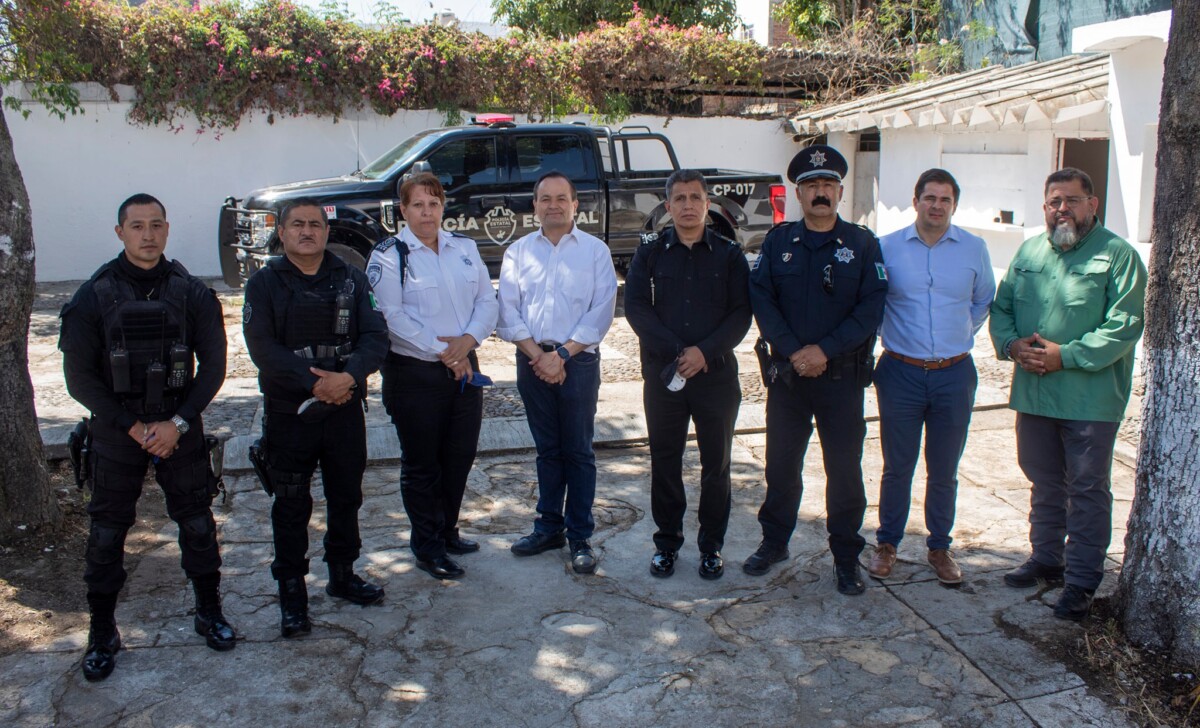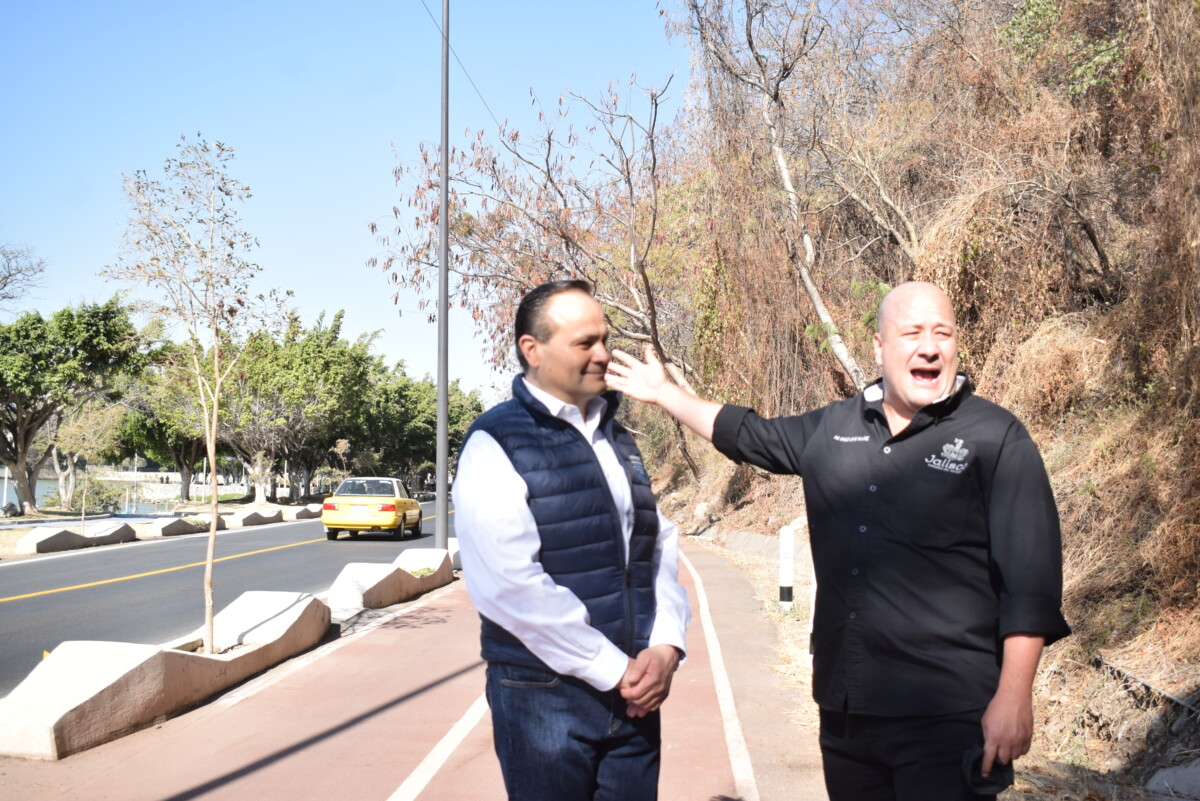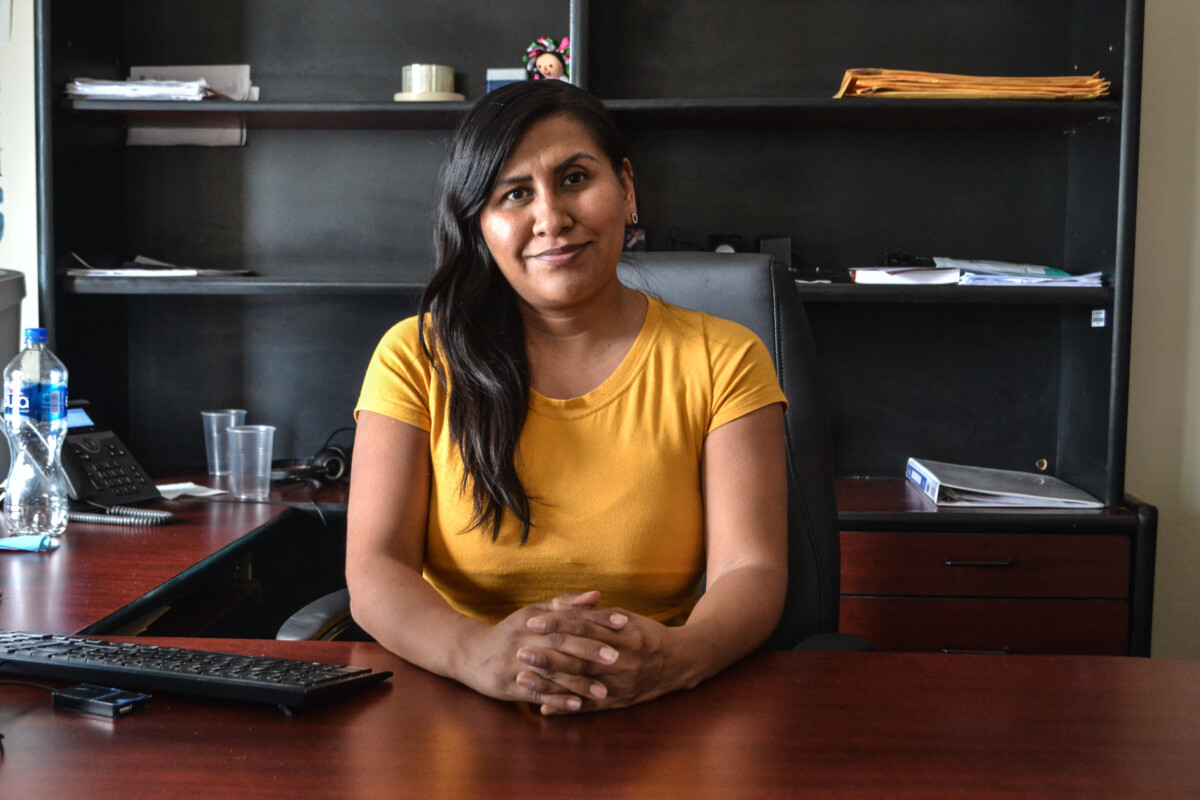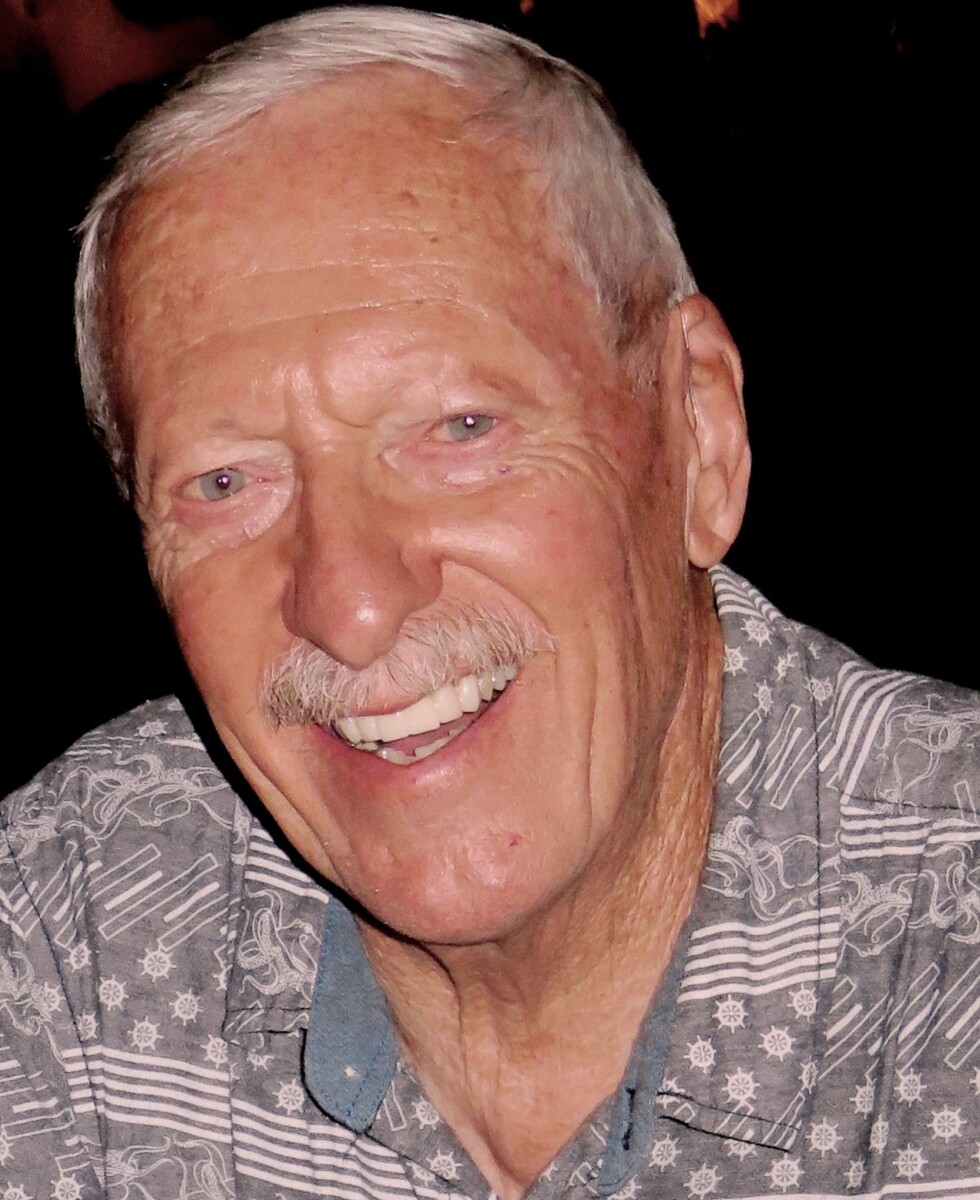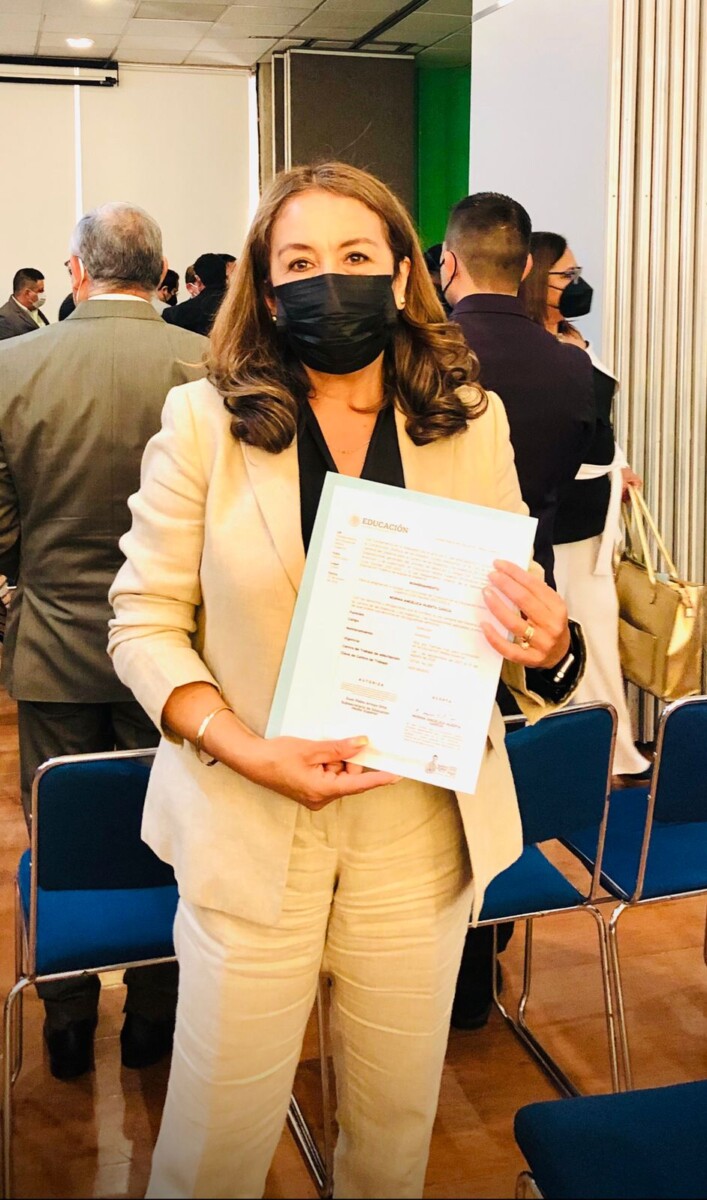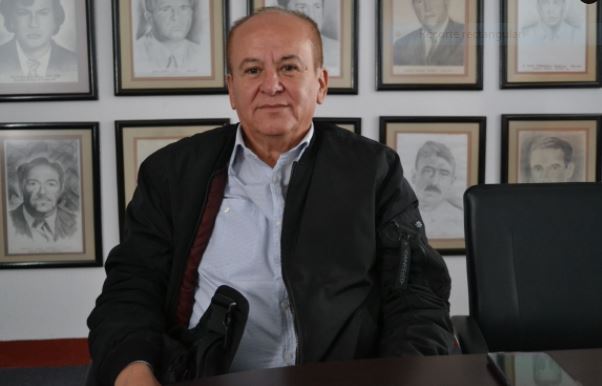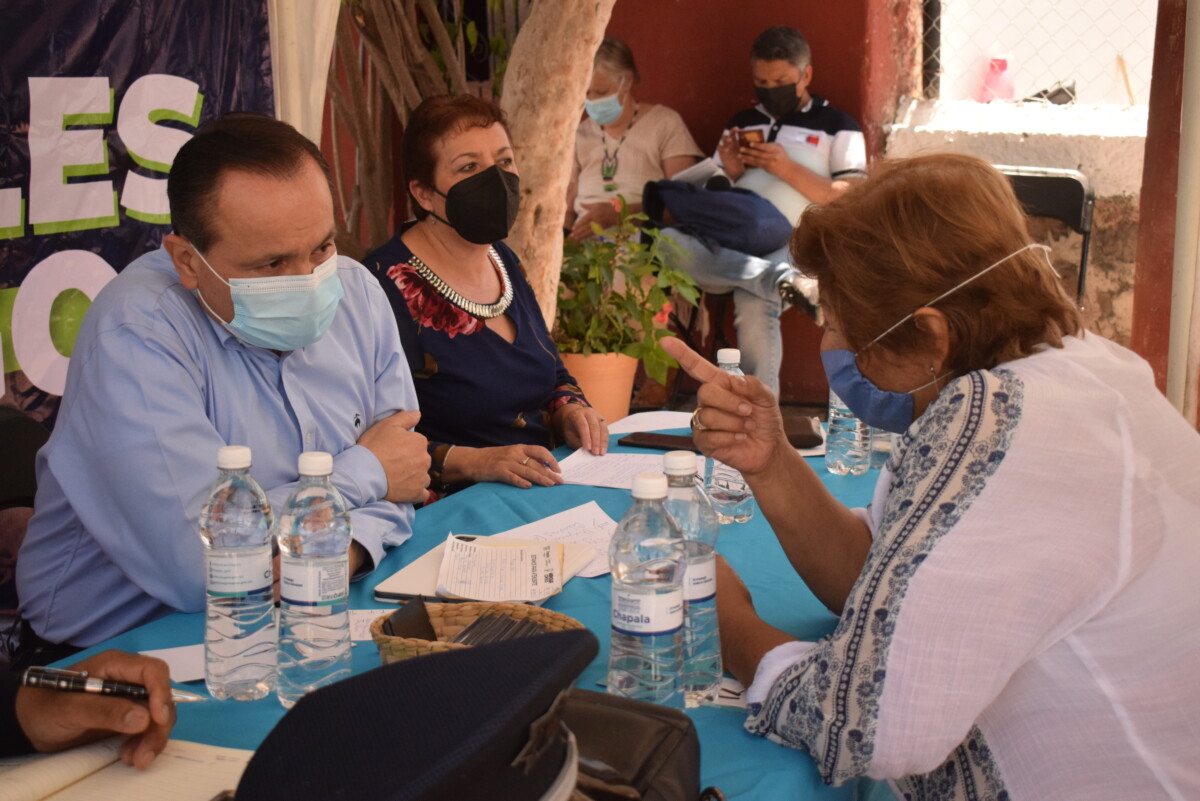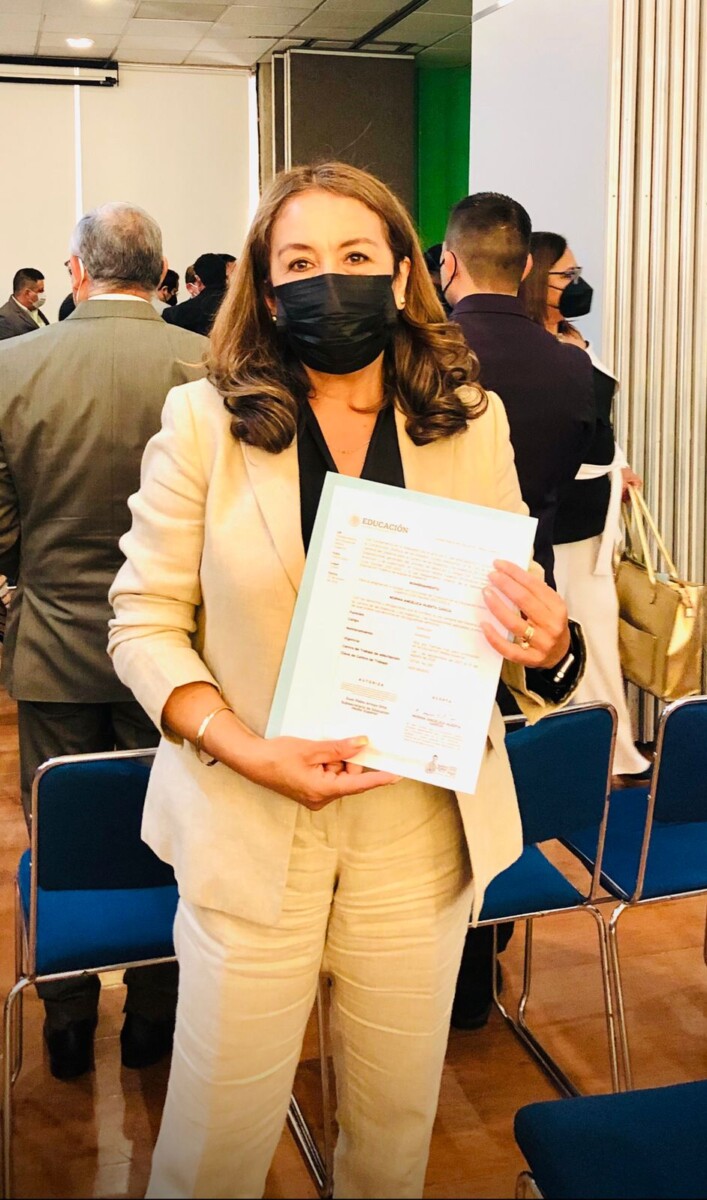politica
Chapala hands over facilities for State Police barracks
Municipal and state authorities during the handover of the building on the corner of Niños Heroes and Zaragoza streets. Photo: Municipality of Chapala.
Jazmín Stengel.- The former Chapala Police headquarters at the corner of Niños Héroes and Zaragoza streets will now be occupied by the Jalisco Regional Police and the Mobility Department, thanks to the signing of an agreement between municipal authorities and the state. Chapala will continue to pay rent on the building.
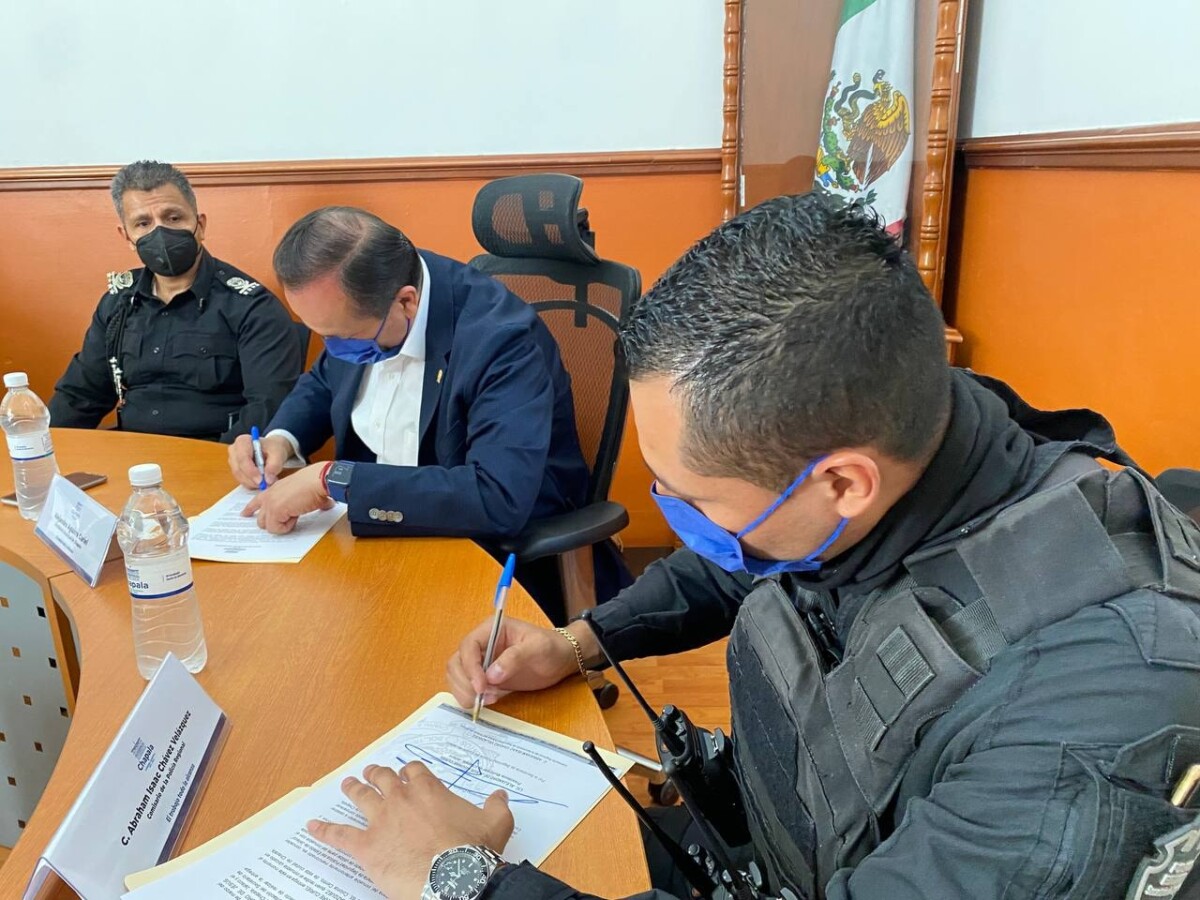
Signing of the agreement between municipal and Jalisco authorities for the handover of the former Chapala Police Station. Photo: Municipality of Chapala.
The agreement established last March 25 between Chapala Mayor Alejandro de Jesús Aguirre Curiel and Regional Police Commissioner Abraham Isaac Chávez Velázquez, will allow the State Police to relocate from a small building in La Cristianía Park.
The move gives the State Police better facilities from which to continue working in coordination with the Municipal Police. This helps guarantee the safety of the population just days before the start of the Holy Week and Easter vacation period.
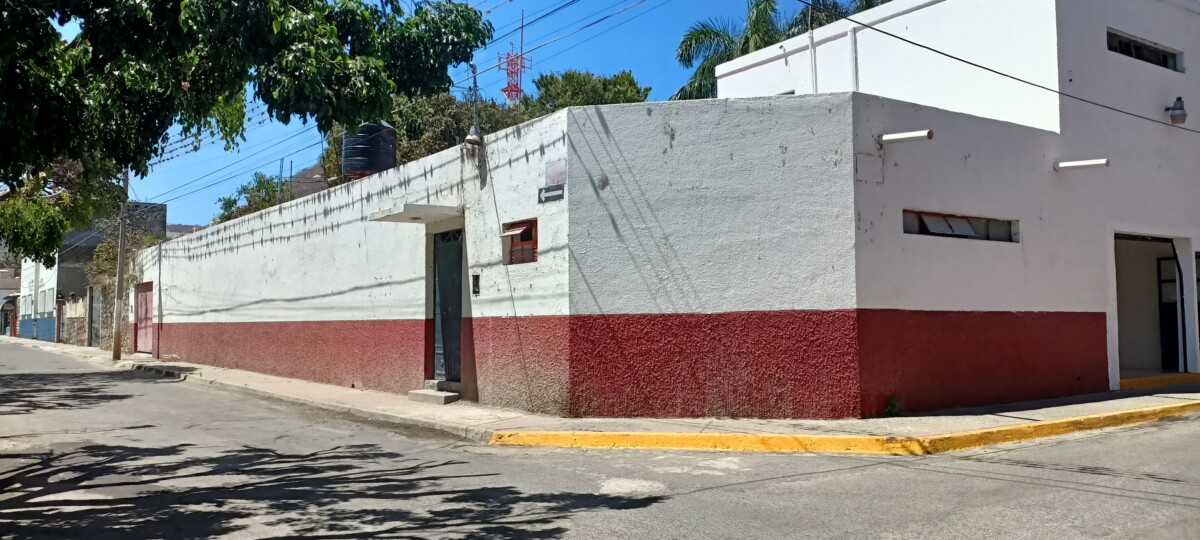
Chapala has rented the building since 1998. Photo: Jazmín Stengel.
Jalisco Secretary of Public Security Juan Bosco Pacheco Medrano said the building is a tool that dignifies police work and helps the State Police coordinate with the municipality to provide peace of mind to both residents and tourists.
“I am pleased to inform you that we have delivered dignified facilities on loan for elements of the State Security Secretariat to have their base of operations,” the mayor said through social media. “The safety and tranquility of the families of Chapala and its visitors is a priority for this government.”
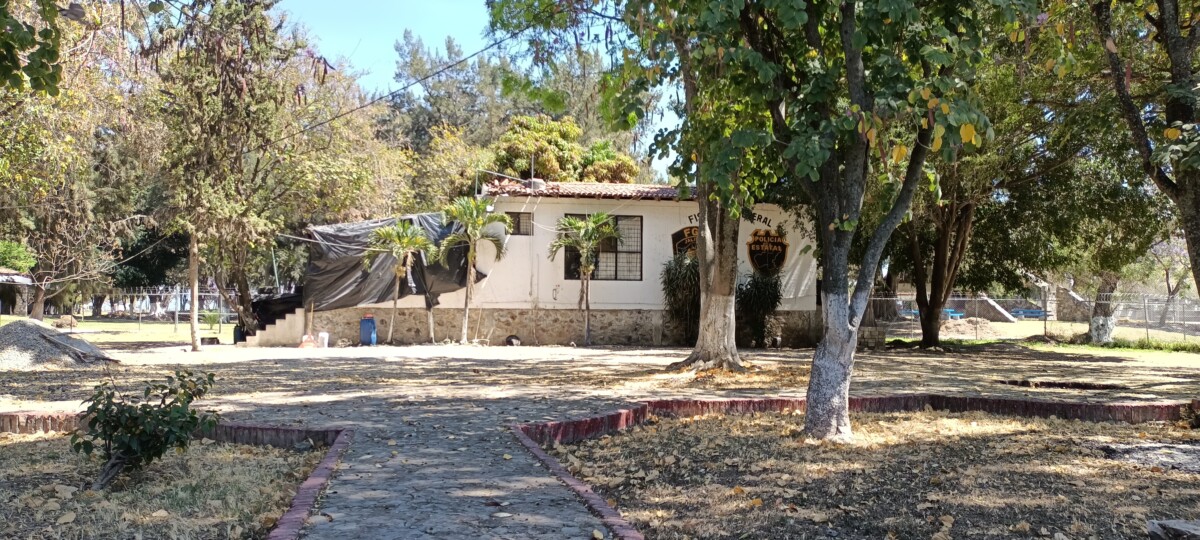
The Regional Police had occupied a small building in La Cristianía Park. Photo: Jazmín Stengel.
Chapala has rented the building since 1998. It was the Municipal Police headquarters until June 2020, when they moved to their new location at the corner of Los Maestros and Isla del Presidio streets. The State Highway Police, with whom the State Police will share the building, began working out of the building a few months ago.
Translated by Mike Rogers
Governor of Jalisco announces investment of 213 million pesos for four projects in Chapala
Jalisco Governor Enrique Alfaro Ramírez together with Chapala President Alejandro de Jesús Aguirre Curiel during the dedication of the 16 kilometers of bicycle lanes in Chapala, in front of La Milagrosa park, at the entrance to the municipal capital. Photo: Jazmín Stengel.
Jazmín Stengel(Chapala).- Jalisco governor Enrique Alfaro Ramírez announced an investment of more than 213 million pesos for four projects during his working tour of Chapala on March 25, 2022. He also inaugurated the Chapala – Jocotepec bike path, toured the 63.32 million pesos rehabilitation of the Auditorio de la Ribera and promised funds for the rehabilitation of the Santa Cruz de la Soledad highway to Ixtlahuacán de los Membrillos.
During his tour he announced the upgrades to Francisco I. Madero Avenue in the municipal capital and, and the Telesecundaria ‘Guadalupe Victoria’ school in Santa Cruz de la Soledad, and more facilities for the Instituto Tecnológico Superior Mario Molina’ campus.
The Instituto Tecnológico Superior will receive 40 million pesos to build 18 new, fully equipped classrooms, multi-purpose rooms and a library. In addition, Governor Alfaro promised to have the Jalisco High Speed Internet Network ready in the next three weeks. This network will also be implemented at the ‘Guadalupe Victoria’ high school.
During his visit to the Telesecundaria in Santa Cruz de la Soledad, the governor said he had spent $12.9 million pesos on the new infrastructure and promised those present to be able to inaugurate the new classroom modules.
Governor Alfaro Ramírez inaugurated the 16 kilometers of bicycle lanes that were built in the municipality of Chapala as part of the state program MiBici. The work that began in 2019, was carried out in two stages with a complementary project that had a cost of 87 million pesos.
The bikeway, which starts in the municipal capital of Chapala and ends at the junction of the Jocotepec beltway along 24.3 kilometers, had a total cost of 211 million pesos, said Enrique Alfaro.
The Governor also announced an upgrade to the entrance to Chapala at Francisco I. Madero Avenue, a 900 meter-long project designed in multiple stages to avoid affecting traffic at Chapala’s busiest intersection. He showed a video detailing how the project would look.
The project has three main objectives. The first is to improve the roadway, replacing the current cobblestones with hydraulic cement and renovating the water and sewage networks that run underneath it. The second is to arrange the parking lot in parallel so that cars «no longer back up» along the avenue, thus avoiding traffic mishaps and maintaining two traffic lanes.
Finally, the project will improve the image of the city’s entrance by installing a fountain on the walkway, almost in front of the San Francisco de Asís parish. It will also extend the bicycle path to the boardwalk, turning the avenue into a «shared street», and modernize the existing outdoor furniture and add new trees.
The 17.5 million-peso cost for the first stage has been secured and the work will begin after the Holy Week-Easter vacations. Although no budget for the total work was disclosed, Chapala Mayor Aguirre Curiel estimated a total cost of approximately 80 million pesos.
A percentage of the still unconfirmed budget will be given to the avenue’s merchants so that they can also improve their image by making it more uniform. This work has been delegated to the Chapala City Council to begin the organization and work with merchants. The construction will be managed by the Secretariat of Infrastructure and Public Works of the State (SIOP).
Translated by Patrick O’Heffernan
Preparations underway for recall referendum of AMLO
Patricia Santos Quevedo, executive vocal of the 17th Executive District Board of the National Electoral Institute (INE). Photo: Héctor Ruiz.
Héctor Ruiz Mejía (Jocotepec).- Jocotopec will oversee the recall referendum known as “Consulta de Revocación de Mandato” (Referendum for revocation of mandate) to which the President of the Republic, Andrés Manuel López Obrado (AMLO), will be subjected on April 10.
On March 23, at around 11:00 a.m., members of the National Defense Secretariat (SEDENA) delivered to the personnel of the 17th Executive District Board of the National Electoral Institute (INE) the 278,286 ballots for the democratic exercise.
The question which citizens will be asked to answer is «Do you agree that Andres Manuel Lopez Obrador, President of the United Mexican States, should have his mandate revoked due to loss of confidence, or continue in the Presidency of the Republic until the end of his term?»
At least 170 polling places will be installed in District 17, consisting of 15 municipalities, including Chapala and Ixtlahuacán de los Membrillos. There will be a special polling place for people outside their electoral area, which will be in the municipal seat of Jocotepec.
The polling places will be supervised by five officials: a president, a secretary, a teller, and two alternates, for a total of 855 participants in the district. They will be instructed by 31 trainers and four field operational electoral supervisors.
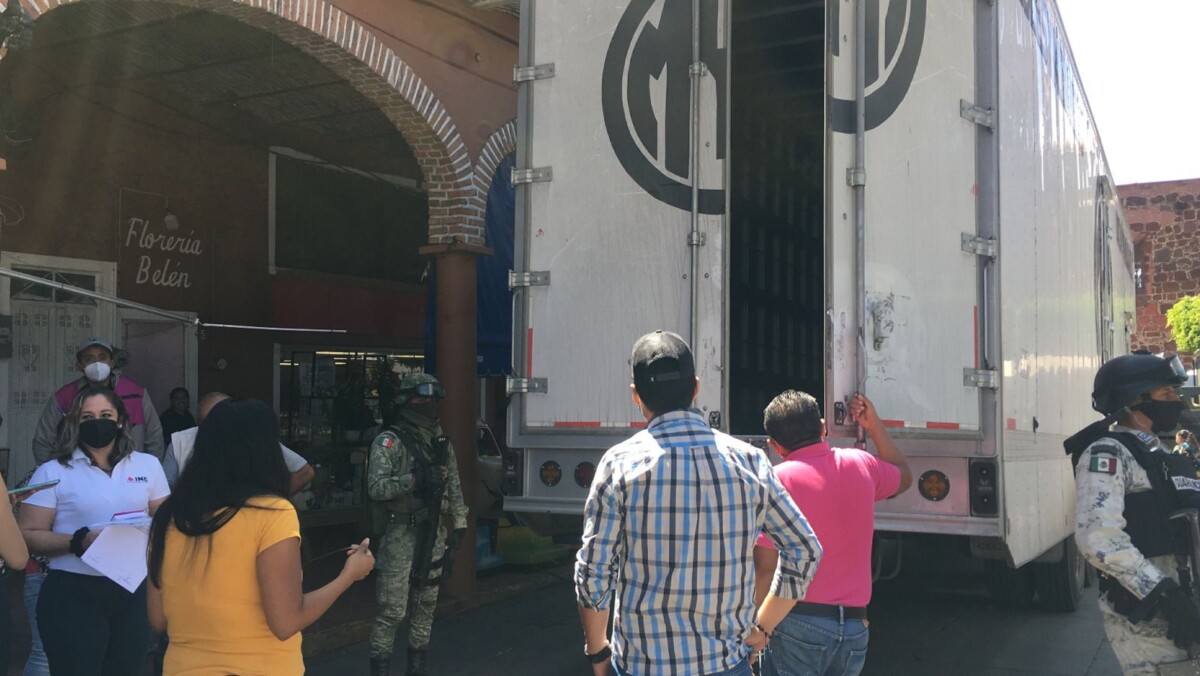
On March 23rd SEDENA delivered more than 270 thousand ballots to the 17th Executive District Board of the INE. Photo: Héctor Ruiz.
Patricia Santos Quevedo, spokesperson for the 17th Executive District Board of INE, said that they are working so that no person of the 272,259 that make up the nominal list will be left without casting their vote.
«This amount is what we are managing, counting and sealing here at INE to guarantee that all citizens have their ballot to cast their vote» commented Santos Quevedo.
In contrast, she said that it was not possible to install the same number of polling places for the 2021 electoral exercise, when 459 were installed. This referendum has a national budget of one billion 567.4 million pesos (about US$28 million), compared to the nearly 4 billion pesos (about US$200 million) of the last elections.
Patrica Santos emphasized that INE has made every effort to provide citizens with the necessary tools and she urged citizens to participate this coming April 10 to exercise their vote for or against AMLO.
As of March 28, the «locate your polling place» platform will be available at www.iepcjalisco.org, where citizens will be able to find their poll location.
Translated by Nita Rudy
Looking a life in Lakeside
Patrick O’Heffernan
Jocotepec President José Miguel Gómez López and the Jocotepec Council deserve high praise for their handling of the pensions for the families of the two officers brutally ambushed while working an accident scene near San Cristóbal Zapotitlán on Thursday. And praise for the people of JOcoepe for the march honoring the slain civil servants Wednesday. Two paramedics who were also attending the accident were also injured in the senseless attack, according to the story published by my colleague Hector Ruiz Mejia.
Despite the opinion of the municipal labor office that the seniority of the officers only entitled their families to 30% of their pensions, President Gómez López wisely proposed and the Council passed a resolution awarding the officers’ families 100% of their pension. This was especially welcome because officer Andrés Inclán Zamora had been on the force for less than 2 months and officer Edgar Omar Leal Nava had been on the force for only two years– terms that would normally limit their pensions. Their devastated families expected further hardship; instead the Jocotepec Council gave them a lifeline.
Mexican communities do not adequately honor and reward their police officers. In fact, until 2018, there was not even a public database of officers killed in the line of duty, according to the NPO, Causa in Common. Now there is, thanks to a joint effort by more than 30 activists and journalists who collect and publish data on police officers killed or wounded in the line of duty every year.
The findings are startling: 452 police officers were killed in 2018, 446 officers were killed in 2019, and so far this year, at least 338 police officers died violently in the line of duty.
And, because of chronically tight budgets, every municipality in Mexico has too few police and it underpays and under equips the ones it has. The National Public Security System (SNSP) and the National Minimum Wage Commission (Conasami) found in a 2021 study, A Living Wage for Police in Mexico, that the average annual salary of a police officer is $350US a month – about what they could make as laborer. The study recommended that starting salaries for police in Mexico be raised to $680 month – a tough sell for municipalities strapped for cash because of stingy state and federal funding.
So, it is doubly inspiring that, in the face of grossly inadequate funding from state and federal governments, the Jocotepec Council voted to give 100% pensions to the families of the slain police officers. Not only was it the right and compassionate thing to do, but it also sent a signal to the nation – and especially to the national and state governments – municipalities need funds to honor and adequately pay their police forces.
Thank you and congratulations to the Jocotepec government for setting an example. Let’s hope they notice in Jalisco and Mexico City.
Norma Huerta is officially appointed director of CETAC 01
Norma Angélica Huerta García, 52, is the new director of CETAC 01 after receiving her appointment February 21. Photo: Courtesy
Héctor Ruiz Mejía(Jocotepec).- After almost five months in the position, Norma Angélica Huerta García received her official appointment as the director of the Center for Technological Studies in Continental Waters of Jocotepec (CETAC 01).
Huerta García, 52 years old with more than 21 years of experience in the educational field, received her appointment on February 21 in Mexico City, along with 233 other directors of schools in 30 states of the country.
The new director has a degree in chemistry, and master’s and doctorate degrees in education. In an interview, she reiterated her commitment to young people in educational matters, assuring that they will always be the school’s priority.
«As an educational institution, our commitment is to provide the community with quality education, promoting the transformation of society; we will always promote learning excellence,» she said.
Huerta García added that the academic commitment will be focused on the new trends of the educational system such as the New Mexican School, with a technological approach implemented in education.
The appointments of the 233 directors were delivered by Guillermo Antonio Solís Sánchez, head of the General Directorate of Agricultural Technological Education and Marine Sciences (DGETAyCM), for the period from September 1, 2021 to August 31, 2025.
Translated by Christalle Dalsted
Jocotepec’s Public Security Commissioner Resigns
Juan Jesús Hermosillo Moreno, Commissioner of Public Security of Jocotepec for more than three years. Photo: Archive.
The commissioner of Public Security of Jocotepec, Juan Jesús Hermosillo Moreno resigned and was replaced by Ernesto Martín López Carrillo. In a video published on his social networks on March 17, the municipal president of Jocotepec, José Miguel Gómez López, announced the departure of Hermosillo Moreno for «health reasons» and the arrival of Ernesto Martín López Carrillo to take charge of public security in the municipality.
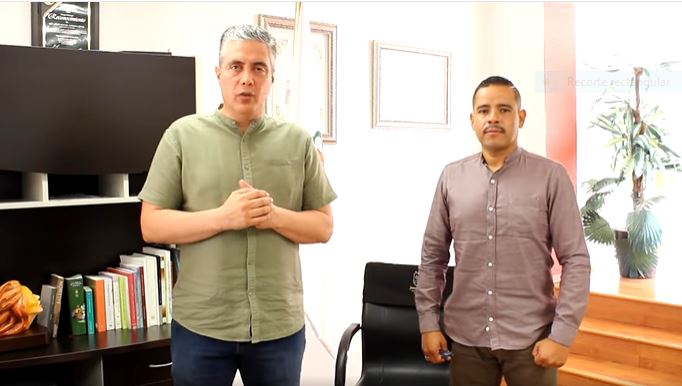
On March 17, President José Miguel Gómez presented the new Commissioner of Pubic Security, Ernesto Martín López as the new Commissioner of Public Security. Photo: Internet.
Gómez López said that the new commissioner comes from Zapopan and has experience in «police matters.» The president also thanked Juan Hermosillo for his more than three years of service at the head of the police station.
Hermosillo’s departure followed a violent incident on March 10 in which two policemen were killed and two firemen were wounded.
Translated by Elisabeth Shields
President Aguirre Kicks Off “Miércoles Contigo” (“Wednesdays Together”) Program in Plaza de Toros
The president of Chapala, Alejandro de Jesús Aguirre Curiel, listening to the complaints of a local citizen.
Jazmín Stengel (Chapala).– More than fifty residents of the Plaza de Toros neighborhood came to the first «Miércoles Contigo,» a new program where the president of Chapala, Alejandro de Jesús Aguirre Curiel, and his cabinet will listen to the complaints and needs of different neighborhoods within the Chapala municipality.
The program, which was one of his campaign promises, began on March 16th. At the first event, water and unsatisfactory lighting, and garbage were among the most recurrent complaints. There were also requests to change the schedule of the little square to close it at night (for safety concerns), as well as the different workshops that the neighbors wish to give to the children of the area.
According to neighbors, the water shortage has gotten worse since the removal of the stone cistern during the administration of a previous president of Chapala, Jesús Cabrera Jiménez (2010-2012). The cistern had been located in the now small square on Colinas del Manglar.
In response to complaints about the garbage problem, the officials promised to install a large sign informing everyone that garbage should not be left in the small square. This will hopefully prevent people from outside the neighborhood from leaving their garbage in the square.
The purpose of the «Wednesdays Together» program is to listen to the needs of residents so that directors of the various municipal agencies can better solve the problems of each neighborhood, both in Chapala, as well as in the towns and villages that make up the municipality.
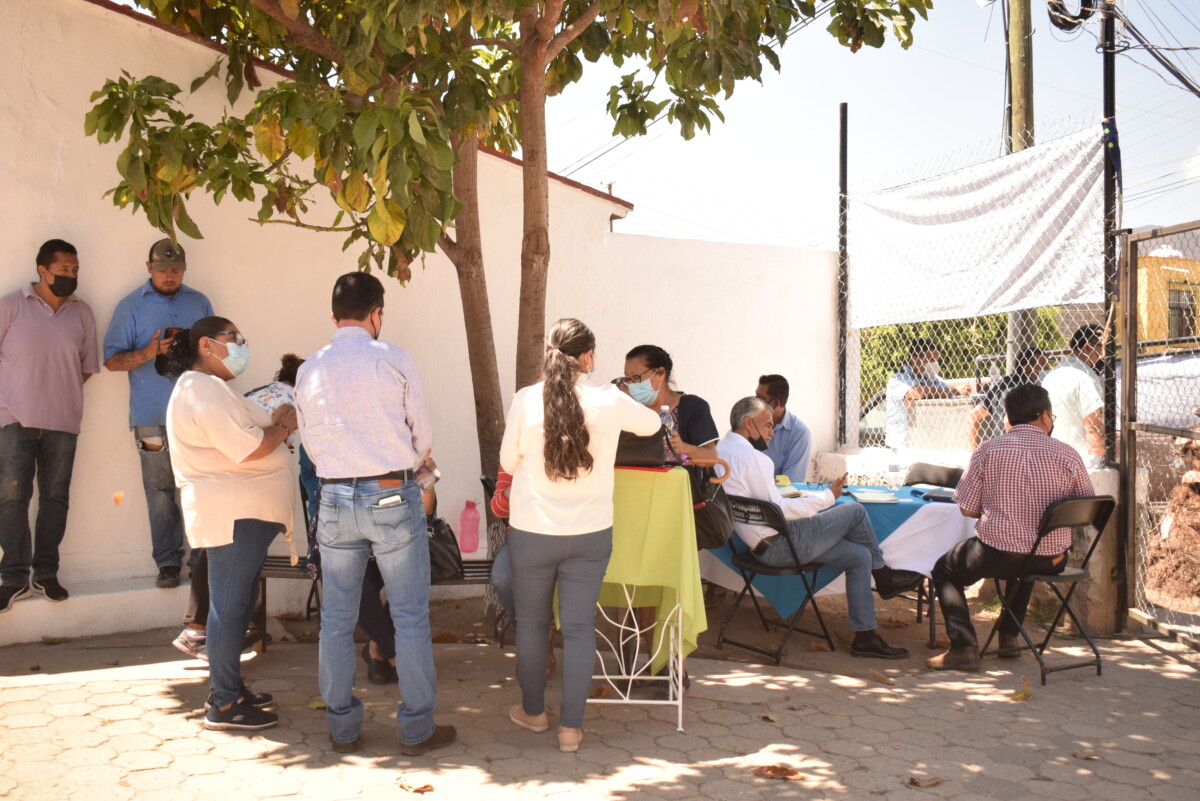
Inside the small square, public officials listening to complaints from citizens
«The main function of government is to be in the street with the people, to address their concerns and needs,» said President Alejandro de Jesús Aguirre. He personally attended to each person’s issue, and then referred them to the appropriate municipal official. It is expected that this will be the way it works every week, said the officials who were interviewed.
At the event, each person who wanted to speak received a numbered card, and a form to write down their complaints, recommendations, and their contact information for follow-up. This three-copy form was distributed as: one to the president, one to the official of the corresponding agency, and one to the citizen
The aldermen present took responsibility to form a neighborhood committee to be in contact with the neighborhood, and follow up on the needs, and requests made. The full calendar of the «Wednesdays Together» program will be announced in the next few days.
Also present at the event were: General Secretary Lilia Alvarado Macías, Trustee Gamaliel de Jesús Soto Pérez, Commissioner of Public Safety, Sergio Conzuelo Ramírez, Head of the Fire and Civil Protection Unit, Lorenzo Antonio Salazar Guerrero, Head of the Municipal System of Potable Water and Sewage (SIMAPA) Chapala, Fernando Antonio Monreal Mendoza, Head of the Women’s Institute, Alicia Medeles Córdova, among other public officials.
Translated by Amy Esperanto
OPINIÓN: FACETAS DE MÉXICO
El 10 de abril se realizará la primera consulta de revocación del mandato del presidente Andrés Manuel López Obrador. Foto: Cortesía.
Por: Pascacio Taboada Cortina y Jorge Martínez Cedillo.
Seguramente México seguirá adelante en su desarrollo como Nación, en caso de que los electores decidan dar por terminada la gestión del presidente Andrés Manuel López Obrador, el próximo 10 de abril. Suceda lo que suceda, es tiempo de pensar qué haremos los mexicanos en caso de que la revocación de mandato sea contraria a las verdaderas intenciones del mandatario.
Si al término de su mandato de seis años, continúan las acciones destructivas de instituciones y programas para el desarrollo de México, con efectos catastróficos en la economía nacional, considerando de manera fundamental el desempleo, la pobreza, la improductividad alimentaria, las inversiones, los mexicanos debemos ponernos a trabajar, ahora mismo, en la planeación para el desarrollo social, económico, político y administrativo “desde abajo”, con vistas a la próxima administración federal.
En el supuesto de que México padezca una verdadera hecatombe por un mal gobierno (así se avizora en los próximos tres años cuando fenezca el actual) por no haber sabido conducir el potencial representado por más de 130 millones de habitantes, ávidos de trabajar, estudiar, salir de una pobreza económica y alimentaria; de mejorar la salud, la educación, la productividad en general, la sugerencia para todos los mexicanos es la de redoblar esfuerzos, trabajar con ahínco, con una mentalidad diferente que abra accesos a una vida que no dependa de la dádiva.
El horizonte que observamos es infinito, con perspectivas de alcanzar realmente el bienestar –no como palabra hueca, producto publicitario de un proceso electoral—sino que el bienestar tenga el significado que nuestros antepasados esperaron desde la Independencia, la Reforma y la Revolución. Han transcurrido, desde entonces, más de 200 años, y los mexicanos seguimos en espera de “mejores tiempos”.
Ahora corresponde a las presentes y futuras generaciones ser capaces para prepararnos y no ser nuevamente sorprendidas; que “no cualquiera venga a ofrecernos el oro y el moro”, y caigamos nuevamente en el atolladero. México no es cualquier cosa, no debe ser juguete de nadie.
Cuenta con un aproximado de 200 millones de hectáreas (casi dos millones de kilómetros cuadrados) de territorio, con más de 11 mil kilómetros de zonas costeras y aguas interiores; con un mar patrimonial que supera al espacio territorial, con más de 300 millones de hectáreas; recursos forestales en unos 50 millones de hectáreas de bosques de coníferas, selvas tropicales, pastizales y manglares, y un potencial de 30 millones de hectáreas con aptitud agrícola.
Además, aún hay riquezas con importantes yacimientos mineros y petrolíferos en el subsuelo, con gran potencial para el desarrollo económico y social. Sobre todos estos recursos, destaca el factor humano, con gran capacidad mental y una fuerza física capaces de dominar la naturaleza.
El actual es momento de reflexionar y “poner los pies en la tierra” sobre el futuro que nos espera. No debemos caer en el conformismo de vivir con lo indispensable y mal acostumbrarse a “estirar la mano para recibir dádivas”, a cambio de nuestro voto. O esperar a que llegue otro que nos ofrezca “galletas verdes”, igual que en la antigua película “Cuando el Destino nos Alcance”, donde participó uno de los actores más representativos del cine, Charlton Heston.
Es tiempo de que reflexionemos sobre las obligaciones que tiene un gobierno desde el momento de asumir su responsabilidad de gobernar. Tenemos que gritar a los cuatro vientos que “no nos roben el tiempo todos los días de la semana”, de dos a tres horas diarias perdidas, además llenas de rencor, de ideas y ataques tan repetidos que, hasta los ‘reporteros de redes sociales’ (llámense aplaudidores) están en la línea, pero con “gran güeva”. Se les nota por la forma de expresión pausada y la impresión de participar por consigna, incluso adoptan el papel de “gestores”.
Mientras tanto la inflación sigue galopando a un ritmo acelerado, a niveles que desde hace más de 20 años no se presentaban cuando tuvimos una inflación del 8,5 por ciento, ahora en marzo de este 2022 andamos rondando el 9.2 por ciento.
Por si fuera poco, el gobierno está echando mano de estímulos fiscales para el subsidio a las gasolinas hasta de un 100 por ciento, debido a que se encuentra en una más de las fases electoreras de parte del presidente, los consumidores esperamos el “gasolinazo” una vez pasado el 10 de abril, día del aniversario de la muerte del Caudillo del sur Emiliano Zapata Salazar, pero también el día señalado para la revocación de mandato.
Norma Huerta is officially appointed Director of CETAC 01 in Jocotepec
Norma Angélica Huerta García, 52, is the new director of CETAC 01 after receiving her appointment last February 21. Photo: Courtesy
Héctor Ruiz Mejía (Jocotepec).- After almost five months in the position, Dr. Norma Angélica Huerta García received her official appointment as the director of the Center for Technological Studies in Continental Waters of Jocotepec (CETAC 01).
Huerta, 52 years old with more than 21 years of experience in the educational field, received her appointment along with 233 other directors of schools in 30 states of the country, on February 21 in Mexico City.
The new director has a degree in chemistry, as well as a master’s and doctorate in education. In an interview, she reiterated her commitment to young people in educational matters, assuring that they will always be the school’s priority.
«As an educational institution, our commitment is to provide the community with quality education, promoting the transformation of society; we will always promote learning excellence,» she said.
Huerta added that the academic commitment will be focused on the new trends of the educational system such as the New Mexican School, with a technological approach implemented in education.
The appointments of the 233 directors were delivered by Guillermo Antonio Solís Sánchez, head of the General Directorate of Agricultural Technological Education and Marine Sciences (DGETAyCM), for the period from September 1, 2021 to August 31, 2025.
Translated by Christalle Dalsted
OPINIÓN: DE NORTE A SUR
El año pasado México vivió la peor sequía en una década, este se vislumbra similar. Foto: World Resources Institute.
Por: Abigail A. Correa Cisneros
Más de 2200 millones de personas en el mundo carecen de agua potable. En el Día Internacional del Agua, que es cada 22 de marzo, vale la pena recordar que esta cifra aumentará debido a la falta de conciencia en el cuidado del líquido y la falta de acciones respecto al cambio climático.
La falta de agua afecta a más del 40 por ciento de la población mundial. Más de 1700 millones de personas viven actualmente en cuencas fluviales en las que el consumo de agua supera la recarga. Asimismo, la falta de saneamiento provoca la muerte de alrededor de mil niños cada día, debido a enfermedades diarreicas asociadas a la falta de higiene.
En México, la escasez de agua perjudica a cerca de 15 millones de ciudadanos. El 30 por ciento de la población tiene acceso deficiente al líquido. Se reportan sequías constantemente en el Valle de México, Sinaloa, Sonora, Chihuahua, Guerrero y Tamaulipas. Pero el Nuevo León la situación es crítica.
El Monitor de Sequía en México (MSM), del Sistema Meteorológico Nacional (SMN) advirtió en 2021 que México atravesaba la segunda sequía más severa desde hace una década. El año pasado, la Comisión Nacional de Agua (CONAGUA) informó que tres cuartas partes del territorio se encontraban padeciendo la falta de lluvias mientras que la mitad del país ya enfrentaba una situación de sequía extrema, pues algunas de las presas más importantes se encontraron por debajo del 25 por ciento de su capacidad total.
Vivimos en la “hora cero”, como mencionó el director del Programa de manejo, uso y reúso del agua en la UNAM (Pumagua), Fernando González Villarreal. Sentenció que en la CDMX quedan escasos 40 años para abastecer de agua a la población. Cada vez será más complicado, si seguimos sin una cultura del cuidado del líquido y sin políticas que mejoren la extracción de los mantos alrededor del Valle de México.
De acuerdo con información de la UNAM, México tiene definidos 653 acuíferos, y 38.7 por ciento de este recurso utilizado en el país proviene de esas fuentes; de éstos, 105 están sobreexplotados, es decir, la extracción excede a la recarga, en varios de ellos en más de 100 por ciento.
De acuerdo con la Comisión Nacional del Agua, 60.8 por ciento del vital líquido con uso consuntivo (es decir, agrícola, abastecimiento público, industria autoabastecida y termoeléctricas) provenía, en el año 2018, de fuentes superficiales (ríos, arroyos, lagos y presas), y el resto de las aguas subterráneas.
Su mayor consumo es agrícola, 75.7 por ciento, y su origen predominante es la superficial, con 63.4 por ciento; en cambio, el suministro público, que incluye la totalidad de la entregada a través de redes de agua potable, tanto a usuarios domésticos como a las industrias y de servicios, tiene como fundamento preponderante al agua subterránea, con 56.7 por ciento del volumen.
El cambio climático repercute en la falta de lluvias debido al aumento de la temperatura lo que altera el comportamiento de los océanos y los ciclos de agua. Desde hace una década, desastres naturales son más comunes, 90 por ciento a causa de inundaciones, tormentas, olas de calor, sequías y otros fenómenos meteorológicos, según la Oficina de las Naciones Unidas para la Reducción del Riesgo de Desastres.
El Informe de políticas de ONU-AGUA sobre el Cambio Climático y el Agua de la organización Un Water, estima que por cada grado de calentamiento global, casi un 7 por ciento de la población mundial estará expuesta a una disminución de al menos 20 por ciento de los recursos hídricos renovables.
Las causas son otras también, como la pésima calidad en infraestructura, el acceso inequitativo y la mala gestión. Se ha detectado que el agua que hoy se destina a uso potable está contaminada con arsénico, boro, fierro, manganeso y plomo, así como compuestos químicos, fármacos, antibióticos y otros contaminantes emergentes.
El organismo Green Peace sugiere que la única manera de frenar este desabasto es “una recuperación y manejo adecuado de las áreas de conservación; el uso de tecnologías para aprovechar las aguas residuales; impulsar proyectos de captación de agua de lluvia en la ciudad; invitar a más gente a organizarse para detener la crisis climática; mejorar la gestión del agua en coordinación con estados vecinos y reducir la inequidad social (pobreza y desigualdad)”.
DESDE EL CENTRO
El Pueblo originario Wixárika pide ayuda para salvarlo de un ecocidio que amenazan empresas mineras. Este miércoles Gobernadores tradicionales de la nación wixárika se reunirán con el presidente Andrés Manuel López Obrador en Palacio Nacional. Entregarán al mandatario una carta en la que solicitarán que los lugares sagrados sean “protegidos”, sean “llevados a rango federal” … La Secretaría de Agricultura y Desarrollo Rural y el Grupo de Trabajo de Agregados Agrícolas en México (GTAAM) se pronunciaron por reforzar la cooperación internacional y el intercambio comercial agroalimentario entre las naciones integrantes, en respuesta a los recientes acontecimientos globales.
En estos momentos, el Gobierno de México centrará su prioridad en fortalecer la seguridad alimentaria del país y cumplir con los compromisos comerciales con más de 181 naciones y la colaboración internacional para hacer frente a los retos que se presentan en el sector, expresó el titular de Agricultura, Víctor Villalobos Arámbula. Ante 34 consejeros Agrícolas y Económicos de las embajadas acreditadas en México, el secretario del ramo señaló que este diálogo oportuno permite reflexionar sobre la visión y perspectivas de la agricultura en el país, en un marco de pandemia y conflicto bélico que impactarán la producción de alimentos.
© 2016. Todos los derechos reservados. Semanario de la Ribera de Chapala
